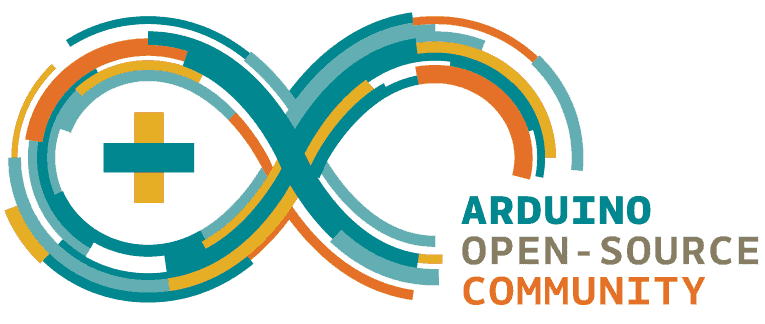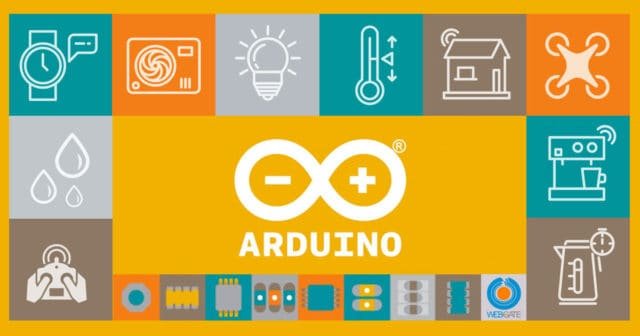Have you heard of the Arduino board but you don’t know if it’s right for you? Do you want to know if it is suitable for your projects?
What Is Arduino?
Arduino is a free hardware company that manufactures boards with a microcontroller and an IDE (development environment) with which any user can create projects of all kinds. The idea is that users, both advanced and novice, can assemble a plate themselves create a unique design for their needs, and use it freely without having to buy a pre-manufactured one.
It is estimated that by 2018 there were already more than millions of Arduino boards being used, and some have been used to create projects such as Arduboy, a video game console the size of a credit card, or TinyScreen, an OLED screen that can be customized and which is the size of a stamp, perfect for use in smartwatches.

Some say that Arduino is like a Lego for people who like technology, but the reality is that any type of person should try to build some of these plates because it is extremely fun and serves as a base to learn other skills.

Arduino Programming C: Is it easy to learn?
Everything you learn has a learning curve, but the Arduino interface is so user-friendly that an average user can learn it form 6 to 8 moths.
From the programming point of view, it is relatively simple: it depends on the complexity of the project, but once you have learned the basics of C, you can try your hand at creating the code independently!
The “complex” part is related to the electronic aspect: for those who are fasting on electrical engineering and electronics, a first approach can be complicated and in some cases disastrous.
If you do not know what you are doing, you can burn the components.
My advice is to start with basic projects so that you can learn as much as possible about the functioning of the components themselves and the construction of the circuits, and then move on to more intricate components and projects!
I don’t know how to use the soldering iron, I don’t know how to make circuit boards: how can I do it?
Welding the components and making printed boards (the so-called PCBs) are aspects that take over when our project wants to be miniaturized or sold as a product.
Arduino, thanks to its versatility, allows to create modular solutions: the components can be connected thanks to the pins that the card makes available and the circuits can be made by breadboard.
It’s like playing with LEGO: we take the pieces we need, we assemble them, we “play” them, and once we have finished everything, we dismantle them and put them back in place.
Projects With Arduino Boards

Many projects can be created using an Arduino board, including the two mentioned above, but there are also many more options. One of the easiest to make and perfect for beginners is an alarm system for the windows or doors of our house.
It is the starting point for almost all projects related to the world of automation, robotics, IoT, and wearable.
Automation
It includes the whole world linked to the construction and programming of intelligent machines that can provide us with a feature or a service automatically.
Just think of the washing machines that can communicate with your smartphone: you can choose what time to start it, to know when it has finished the washing cycle …
Think of air conditioning, it allows it to be programmed so that there is no waste. Imagine being able to tell your heating system what time you leave the house, when you come back, and how long you stay inside.
In this way, the system understands your rhythms and sets the heating to be used as efficiently as possible!
IoT: Internet of Things
Think of the latest car alarm systems. that can tell you in real time (on your mobile phone) where the car is, what route it took, or how much fuel is used.
All this is possible thanks to a small system inside your vehicle that allows you to be constantly connected thanks to the Internet, to your mobile phone.
Wearable
Finally, another disruptive world of this last period is wearable.
These are wearable devices that allow useful functions for the person: smartwatches are a case in point in this category.
They are watches, which allow the end-user to monitor his physical activities (walking, heart rate, breathing, amount of sleep …) as well as other additional features (alarm, call waiting, reminder …).
Is it required in the workplace?
If your goal is to work in the IoT or automation world, Arduino is the best starting point you can have.
Companies, often startups, are always looking for people who can realize their projects!
Precisely because Arduino allows a huge degree of freedom and autonomy in creating working solutions, you will have an edge in showing you are a valid and competent person.
You know creativity is a great expedient for self-fulfillment: Arduino, in my humble opinion, is an addictive world.
The more curious you are, the more attracted you will be: the consequence is to increase your knowledge of this world implicitly and amusingly!
To work in this world, it is necessary to have an educational background: companies prefer graduates and graduates in computer science and/or electronics.
Starting as an autodidact in this world and looking for work is quite difficult, but not impossible.
The best way to make yourself known and successful in the eyes of companies is to publish your projects through the main sharing platforms linked to the world of computing

Why is Arduino so useful?
Arduino can be a great hobby in which you will not spend much money and that you can share with other friends who also love technology. To create all kinds of things you can buy parts in China, which will take a little longer to arrive, but they will cost much less and allow you to create all kinds of robots for very little money.
Another great advantage of Arduino is that it is a good way to learn about electronics and programming. If you are interested in learning to program, you can always take an online course but also learn the basics of algorithms and syntax by creating Arduino robots. The code used to program Arduino boards is quite easy, so it will be a less stressful way to train your brain to understand the logic used in more advanced programming languages.
And if your interest is in electronics, either because you would like to learn to repair the toaster or simply because it seems like a fun topic, Arduino will introduce you to the world of circuits, transistors, bonuses, screens, resistors, and capacitors, LED lights and others more things.
Is Learning Arduino Programming a Good Pathway for Beginners to Learn Code?
Learning Arduino programming can be a great pathway for beginners looking to learn code. Arduino offers a user-friendly environment and a versatile platform for experimentation. It allows beginners to understand the fundamentals of coding while also getting hands-on experience with physical computing. With resources and communities available to support beginners, Arduino is an excellent choice to learn code for beginners.
Starting With Arduino
How do I get started with Arduino Programming? This is a very common question among lovers of electronics and programming. To get started you should follow these steps:
- Get a good tutorial source: A good book to learn the basics of Arduino programming as a beginner is “Arduino for Dummies”. The book is an excellent resource for beginners and average programmers.
- Arduino download: You can not program Arduino without the Arduino IDE. Visit the official website to download the IDE. The IDE contains basic tutorial codes like Arduino codes for LED.
Start your journey into Arduino programming today.




0 Comments